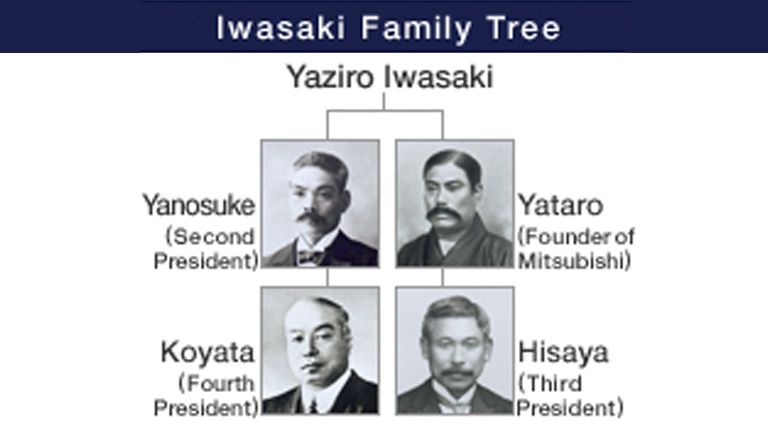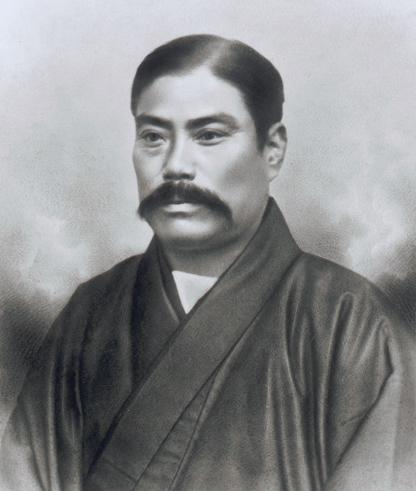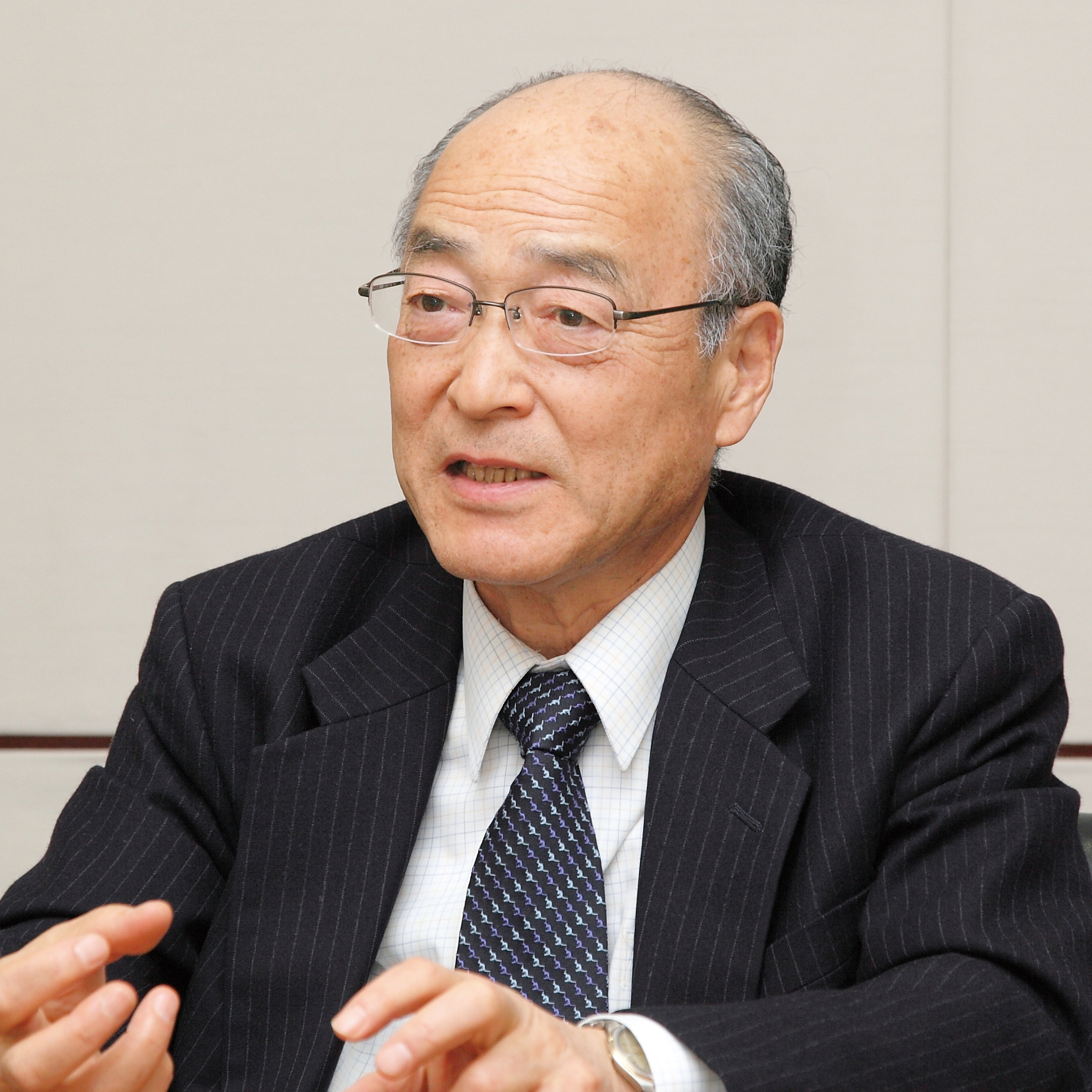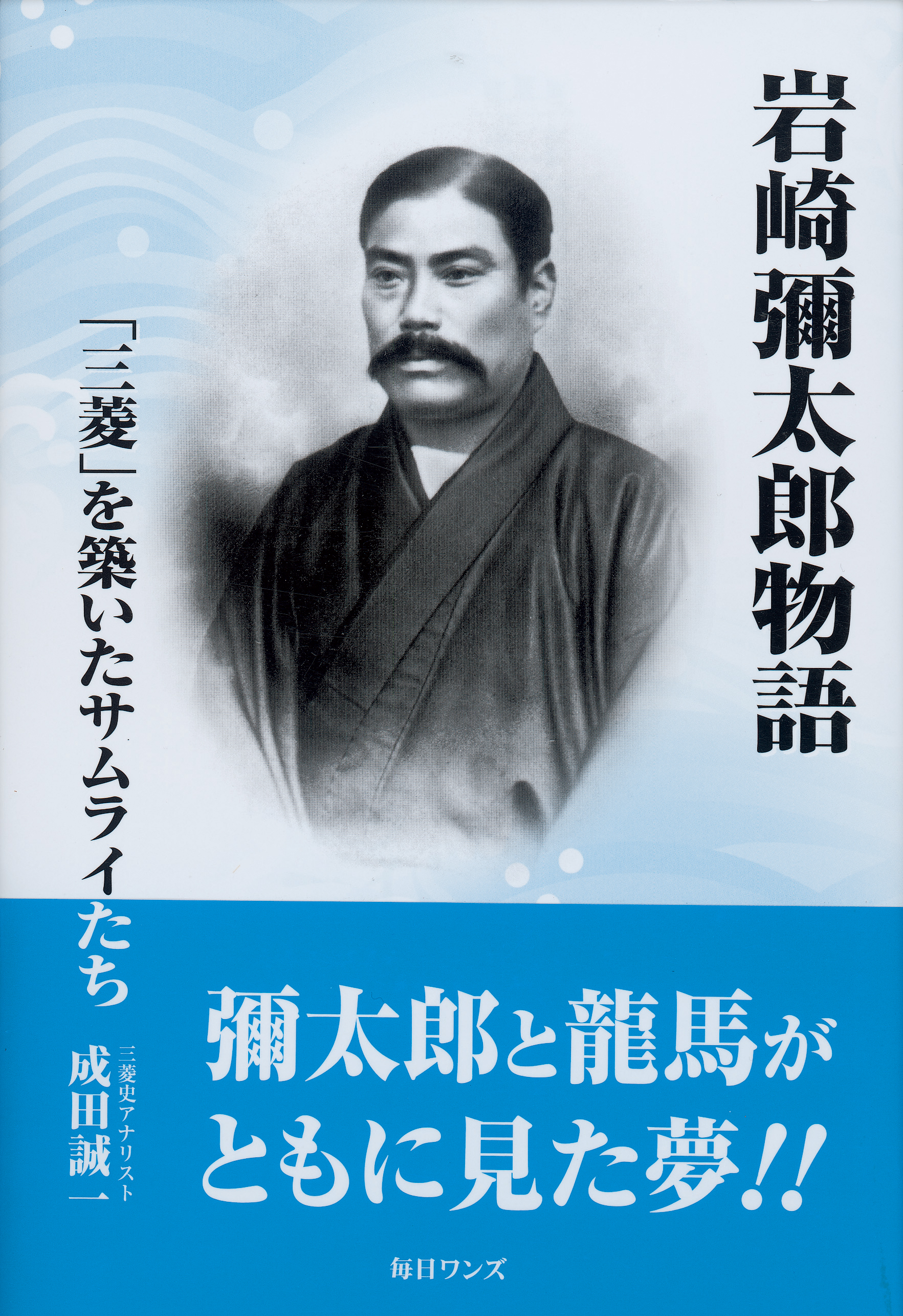Our Roots A history of rising to the challenge vol.2
Mitsubishi's Foundations Underpinned by Strong Sense of Honor
Our Roots talked with Mitsubishi History Analyst and former Mitsubishi Corporation (MC) employee Seiichi Narita about Mitsubishi Founder Yataro Iwasaki and the values that were passed on at Mitsubishi over the generations.

Remarkable Foresight Set Yataro Apart
| Interest in Yataro Iwasaki has been growing due to the popularity of NHK's historical drama Ryoma Den ("The Tale of Ryoma Sakamoto*"). |
Many people I know are not very pleased with the way that Yataro has been portrayed in Ryoma Den, but a drama is a drama, and as such it is not required to stick to historical facts. * Ryoma Sakamoto is a heroic figure from Japanese history during the days leading up to the Meiji Restoration. |
|---|---|
| What was Yataro really like? |
He cannot be described in a single word. Yataro was extremely sharp and driven to learn; he was tenacious, unyielding and had an indomitable spirit. He hated to lose, but also possessed a broad outlook. However, what was most amazing about Yataro was his remarkable foresight. For example, he sent his brother Yanosuke to study in the U.S. at a time when Christianity was strictly forbidden in Japan. After having interacted with foreign traders in Nagasaki and learning the great scope of the world, Yataro sensed the wave of impending change and therefore sought to equip his successor with international sensibilities. Yataro had been raised in extreme poverty, but under the influence of his mother, he set his sights on academic pursuits and eventually secured a chance to go to Edo (modern-day Tokyo). People were struck by the ravenous appetite he had for learning. One former classmate left the following testimonial: "He read everything he could get his hands on; no one could match his powers of concentration". |
| When did Yataro get the opportunity to demonstrate his aptitude for business? |

Yataro's studies in Edo were cut short because of some problems involving his father. After that, Yataro went through some tough times, but he caught a break in 1867 when he was sent to work in Nagasaki for the second time. This was also when he met Ryoma Sakamoto. Two years later, he was sent to Osaka and placed in a position of overseeing Tsukumo Shokai, a trading company established by the Tosa Clan. Yataro took an active role in managing the business, and in 1873, he changed the company's name to Mitsubishi Shokai. The turning point really came the next year. The government was having trouble finding someone to transport troops and supplies to Taiwan when Mitsubishi was finally chosen for the task. Mitsubishi accepted the job, despite the risks, based on the belief that the company owed its very existence to the nation. The operation was a success, thereby earning Mitsubishi the confidence of the government. Mitsubishi grew further to become Japan's leading shipping enterprise after continuing to support the government during the Satsuma Rebellion. Still, Yataro was not satisfied. "Out of ten things I set out to do, I have only accomplished one or two," said Yataro, before dying of cancer at the young age of 50. Yataro's oldest son Hisaya was still quite young, so Yataro's brother Yanosuke stepped in to run the company like a "one-out reliever" until Hisaya was ready. |
A Vital Lesson, Handed Down Over the Generations: "Do Not Forget What It Was Like to Be Poor"
| Please tell us about Mitsubishi's history after Yataro |
Yataro's approach to business was all about pushing forward, but Yanosuke was different; if pushing didn't work, he might try pulling instead. Yanosuke established a far-reaching intelligence network and then considered wisdom received from various sources. He brought in outstanding personnel, including foreigners, to complement the diverse network that Yataro had cultivated. He promoted the diversification of Mitsubishi's business by expanding into fields such as mining and shipbuilding. Yanosuke also sent Hisaya to study in the U.S., just as he himself had done. At the age of 50, Hisaya yielded the presidency to his 36-year-old cousin, Koyata. With WWI helping to fuel a robust economy, Hisaya believed it was the ideal time to leave the company in the hands of his successor. Koyata had a very international outlook. He graduated from Cambridge University after his father, Yanosuke, recommended that he study in England. Koyata was an outspoken advocate of the spirit of internationalism, even as fascist elements began to emerge, and his stance didn't change after the outbreak of Pacific War. While Koyata told company executives that "Mitsubishi would do its best for the country", he also went on to say, "Mitsubishi owes its existence to its British and American colleagues. The time will come again when we can work together as friends towards world peace and the welfare of mankind." 
|
|---|---|
| What did the four presidents have in common? What traits remained the same? |
They all shared the samurai spirit of the Meiji era-or in a word "honor". This spirit was also reflected in a strong sense of duty, loyalty, and fairness. The number one priority in their business activities was making contributions to the nation and society; the second was ensuring the economic rationality required to do this. I think this mindset is highlighted by the phrase Shoki Hoko ("Corporate Responsibility to Society"; now one of MC's Three Corporate Principles). Mitsubishi continued to be soundly managed even while being totally under the control of the Iwasaki Family. I think this is largely due to the fact that the heads of the Iwasaki Family (after Yataro) all studied in the West and learned the ways of the world. Beyond this, Mitsubishi also had a custom of actively cultivating the human resources needed for the company on its own. The company established a boarding school, which both Hisaya and Koyata entered when they were still young and impressionable. They lived under the same roof with other students who went on to become top managers. This vigorous and austere communal living experience had a large impact on them. Managers at Mitsubishi, who had shared this experience with Hisaya and Koyata, freely voiced their opinions to the president and engaged in discussion. This, in turn, led them to arrive at sound decisions. Going back even further, the family precepts left by Yataro's mother and the rule of "do not forget what it was like to be poor" also had a large impact. The lessons of "not forgetting their origins as a poor family on the brink of starvation and not becoming arrogant" were firmly passed on from generation to generation. |

Mitsubishi History Analyst Seiichi Narita
Seiichi Narita previously worked at MC, engaging in power plant exports and corporate communications. He became an executive director at Mitsubishi Economic Research Institute (MERI) in 1999 and oversaw the Mitsubishi Archives. He assumed his current position in 2007. Narita has written various works related to the history of Mitsubishi and is an active lecturer. His book, "The Story of Yataro Iwasaki: The Group of Samurai Who Built Mitsubishi" (publisher: Mainichi Ones), came out February, 2010.
